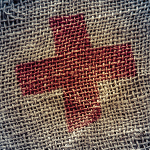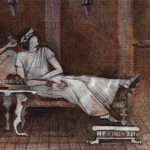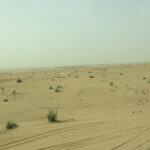In Flanders fields the poppies blow
Between the crosses, row on row,
That mark our place; and in the sky
The larks, still bravely singing, fly
Scarce heard amid the guns below.
We are the Dead.
Short days ago
We lived, felt dawn, saw sunset glow,
Loved and were loved, and now we lie
In Flanders fields.
Take up our quarrel with the foe:
To you from failing hands we throw
The torch; be yours to hold it high.
If ye break faith with us who die
We shall not sleep, though poppies grow
In Flanders fields11

Simon M. Helfgott, MD, is associate professor of medicine in the Division of Rheumatology, Immunology and Allergy at Harvard Medical School in Boston.
References
- Carter R. John McCrae (1872–1918): Doctor-Soldier-Poet. Ann Thorac Surg. 1997 Jan.;63(1):264–268.
- Gilbert M. The First World War: A complete history. New York: Henry Holt & Co, 1994:97–98, 447, 478, 508 and 133.
- Laffin J. Surgeons in the Field. London: J.M. Dent & Sons, 1970:224.
- Rodway GW. The foundations of wilderness medicine: Some historical features. Wilderness Environ Med. 2012 Jun.;23(2):165–169.
- Bollet AJ. Rheumatic diseases among Civil War troops. Arthritis Rheum. 1991 Sep.;34(9):1197–1203.
- Fiessinger N, Leroy E. Contributions a l’etude d’une epidemie de dysenterie bacillaire dans la Somme. Bull Mem Soc Med Hop Paris. 1916;40:2030–2069.
- Reiter H. Über eine bisher unbekannte Spirochä- teninfektion (Spirochaetosis arthritica). Dtsche Med Wschr. 1916;42:1535–1536.
- Kahn M-F. The World War I (1914–1918) and rheumatology. Joint Bone Spine. 2014 Jul. 19:pii: S1297-319X(14)00157-2.
- Lanska DJ. Historical perspective: Neurological advances from studies of war injuries and illnesses. Ann Neurol. 2009 Oct.;66(4):444–459.
- Mukherjee S. The Emperor of All Maladies. Scribner & Sons. New York, 2010.
- McCrae J, Macphail A. In Flanders fields. Google e-book. http://books.google.com/books?id=Hgk1AAAAMAAJ&printsec=frontcover&source=gbs_ge_summary_r&cad=0#v=onepage&q&f=false.
Author’s note: In my editorial, “Working Feverishly” (The Rheumatologist, September 2014), I should have credited the seminal research of Daniel Kastner, MD, PhD, senior investigator, Metabolic, Cardiovascular and Inflammatory Disease Genomics Branch, and head, Inflammatory Disease Section, whose numerous scientific contributions established the field of autoinflammatory disease, a term he coined.



